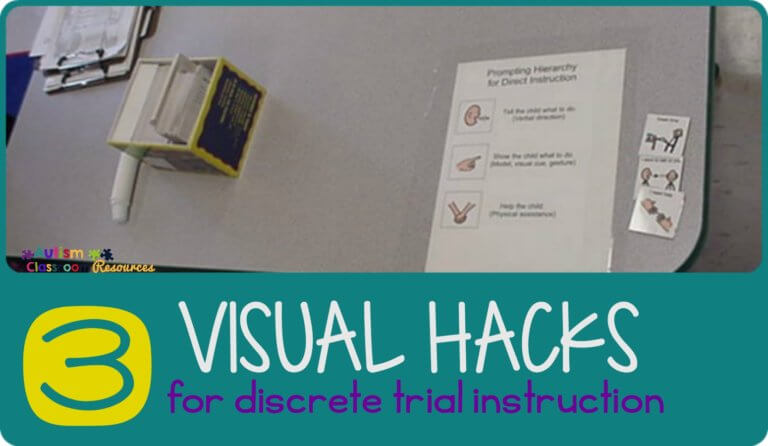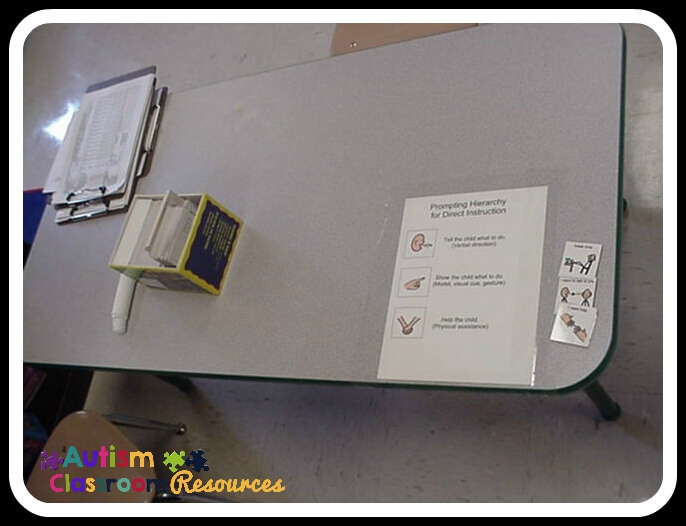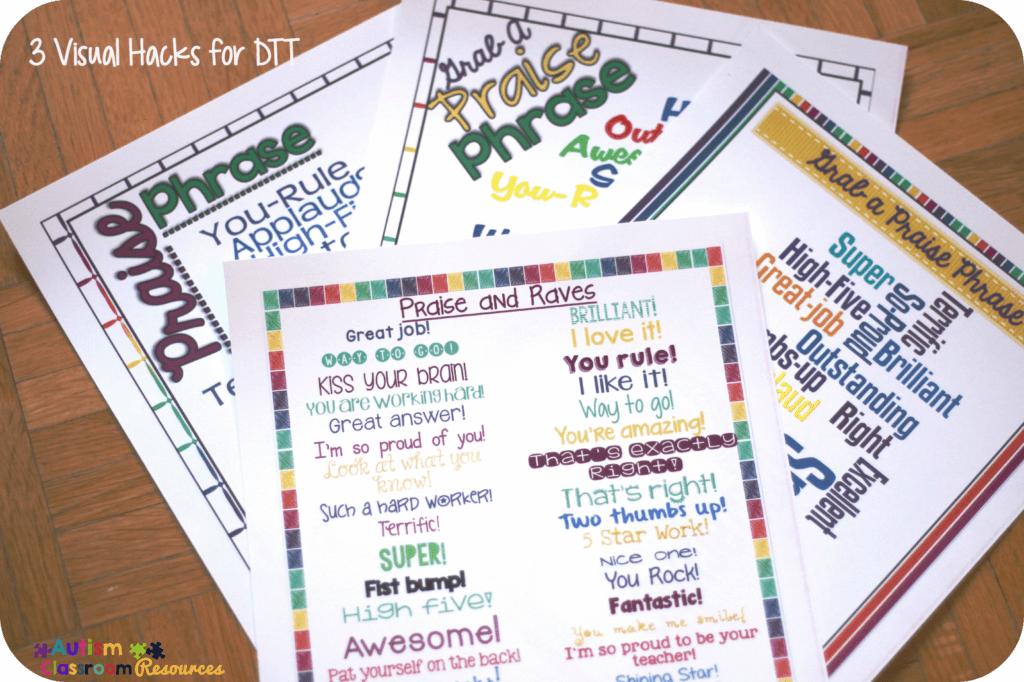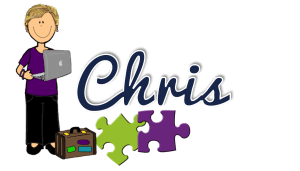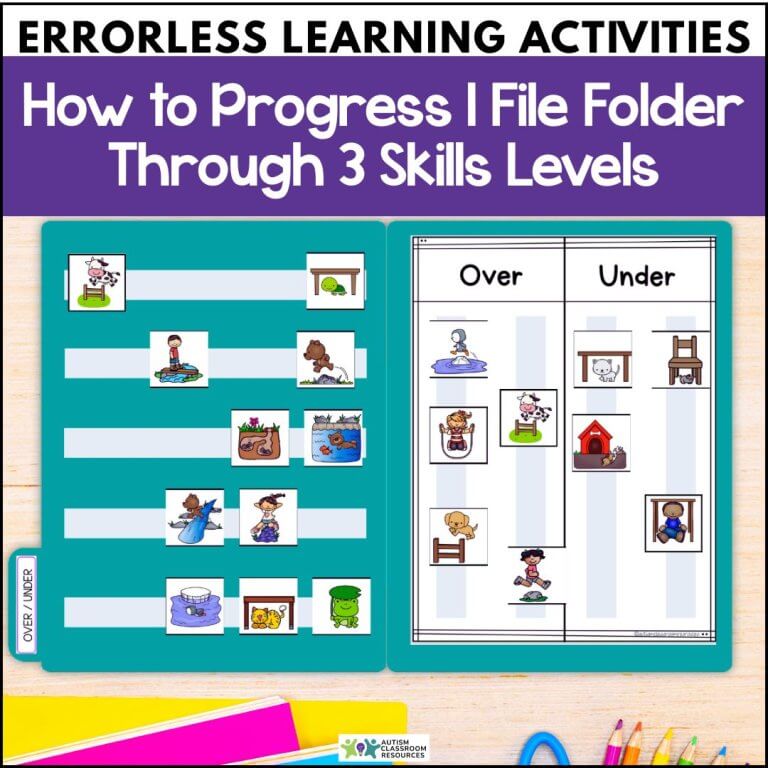Continuing with the Effective Interventions in ABA, today I want to focus on some visual strategies for adults to help keep students engaged in ABA instruction during discrete trials and throughout the day. Trying to keep everything in your head that you need to remember to provide effective instruction for a classroom of students is not an easy task (and that’s an understatement). So over the years, I have worked out some strategies to help teachers remember thorough the use of visual cues. I’m a strong advocate for the fact that visual cues aren’t just for our students, which I think I’ve talked about before. Today I thought I would highlight some quick and easy hacks I’ve sent up in classrooms to serve my aging memory.
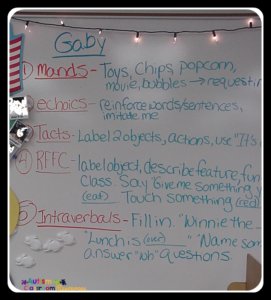
This is a list of language skills and targets that a student was working on in discrete trials as well as throughout the day. Targets simply refer to the focus of the skill. This was a program using applied verbal behavior that uses ABA principles to teach different functions of language (more about that in a later post). To translate quickly, Mands are requests. Echoics are when the learner echoes/ repeats what you (or a peer) said. Tacts are labels. RFFC stands for receptive feature, function, class. It applies to many of the wh- questions we teach but focuses on being able to identify items when they are described by a characteristic, what it does, or what category it goes in. Finally, intraverbals are using language in more conversational ways from fill in the blank as a starting point (as seen in her list) to comments and on. The teacher kept these on the whiteboard in Gaby’s instructional area and they were easy to refer to from throughout the classroom. So, if she was in snack, it would be easy to look up at the board and see that you could ask her to tell you about the cookie you hold out or that she should be requesting for popcorn. This way everyone is on the same page about what is being targeted. The dry erase board is useful because it’s easy to change it out as the targets change. If you don’t have a white board, you can use a written list on paper and laminate it, use a dry erase marker and the change it when the targets change.
The second visual I use is a prompting hierarchy posted in different places in the classroom. This one shows how I like to tape things to the table. I use Scotch Heavy Duty Shipping Packaging Tape–yes the brand name counts in this situation because it lasts longer (I used to use it for covering visuals in schedules before good laminate). Disclaimer: That is an affiliate link which costs you the same but pays me a small amount but I wouldn’t recommend it if it wasn’t exactly what I use and suggest. I’ve tried others and they just peel over time and the kids can pick at them more. This type of resource is taped on the teacher’s side of the table so it’s less likely to be picked at by the kids, but the Scotch tape is what I use to tape feet to the floor. But I digress. What is taped on the table is a list of the prompt hierarchy we used in this classrooms. I’ve done various combinations of these depending on the students and situation from 3-prompt procedures to simple prompt hierarchies. You can download a prompt hierarchy here for free and a reminder poster here for free. I like to put these around the room as well to help remind people to use prompting effectively in every activity.
Finally the third visual hack is really two-fold. The first is to post a list of reinforcers for specific students around the classroom. They can be created much like the target lists discussed above. However, I also find it useful to have a list of praise phrases. When I’m doing discrete trials, I cannot tell you how hard it is for me to think about everything at one time and the first thing that gets sacrificed is that I always say the same verbal praise reinforcer–it appears I favor “Good job.” So when I find myself in a rut, I like having these types of posters above the head of the student or taped to the table that I can pull from. I am in love with anything that requires less thinking and concentration on my part while working with students. 🙂
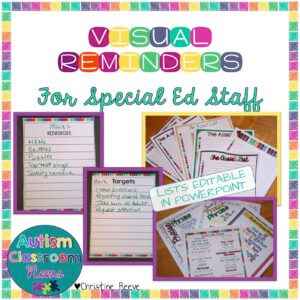 So, those are three classroom visual hacks of visuals for adults to support ABA instruction throughout the day. They also help to remind staff that the systematic instruction has to be used in other areas of the room, not just during discrete trials. If you are interested, the praise phrases and versions of all the supports I’ve talked about today are available in my newest addition to the store below. Click the picture above or below to check it out. It includes the multiple versions of the praise phrases, multiple types of prompt hierarchies, lists for class-wide and individual student for targets and reinforcers, independent work area reminders, and many versions of to-do lists to keep in the classroom. If you have my schedule bundles and are interested in a set that matches those, please leave me a comment below–I’m trying to decide whether to make them in those themes or not but will if it is of interest.
So, those are three classroom visual hacks of visuals for adults to support ABA instruction throughout the day. They also help to remind staff that the systematic instruction has to be used in other areas of the room, not just during discrete trials. If you are interested, the praise phrases and versions of all the supports I’ve talked about today are available in my newest addition to the store below. Click the picture above or below to check it out. It includes the multiple versions of the praise phrases, multiple types of prompt hierarchies, lists for class-wide and individual student for targets and reinforcers, independent work area reminders, and many versions of to-do lists to keep in the classroom. If you have my schedule bundles and are interested in a set that matches those, please leave me a comment below–I’m trying to decide whether to make them in those themes or not but will if it is of interest.
And finally below is a great visual for Pinterest with these ideas so feel free to share.
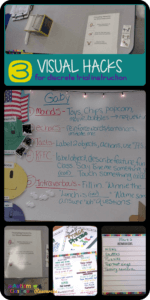
I’ll be back on Sunday with some tips on the first week of school and at the end of next week I will continue the Effective Interventions in ABA by talking about whether DTT has to be 1-1.
Until then,

